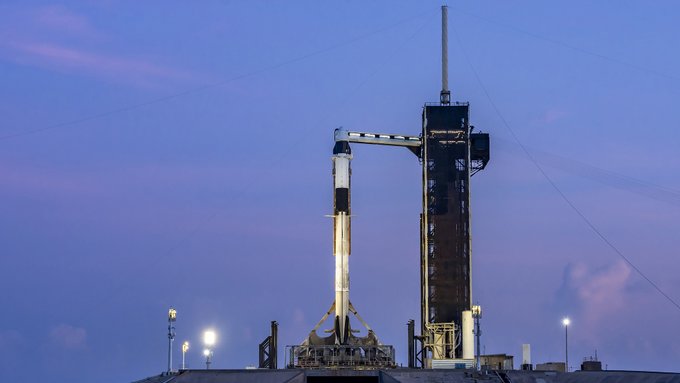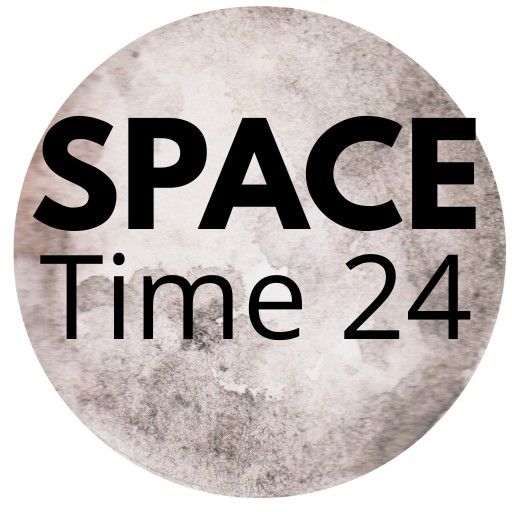
The highly anticipated Axiom Mission 4 (Ax-4) marks a significant milestone in commercial space travel and international collaboration. As Indian astronaut Shubhashu Shukla prepares to lift off alongside his fellow crewmates, many space enthusiasts are curious about how exactly this crewed mission will reach the International Space Station (ISS) and dock successfully. Here’s a detailed of the journey from launch pad to orbit.
1. Launch from Earth: SpaceX Falcon 9 Lift-Off
The Ax-4 crew will begin their journey aboard a SpaceX Falcon 9 rocket, lifting off from NASA’s Kennedy Space Center in Florida. The rocket carries the Crew Dragon spacecraft on its nose cone — the vehicle that will transport astronauts to the ISS. The powerful Falcon 9’s first and second stages work in sequence to push the spacecraft beyond Earth’s atmosphere and into low Earth orbit (LEO).
2. Separation and Orbit Insertion
After around 9 to 10 minutes into the flight, the Crew Dragon capsule separates from the second stage of the Falcon 9 rocket. Once separation is complete, the spacecraft initiates orbit insertion, adjusting its trajectory to match the ISS’s orbital plane. During this phase, Dragon performs a series of pre-programmed thruster burns to raise its orbit gradually and synchronize its path with the ISS.
3. Autonomous Flight and ISS Rendezvous
The Crew Dragon is equipped with an advanced autonomous navigation system, which guides the capsule toward the ISS. While the capsule operates mostly on autopilot, SpaceX mission control in Hawthorne, California, and NASA experts monitor all flight stages. The astronauts aboard can take manual control if needed, but Crew Dragon is designed to handle the entire rendezvous and approach autonomously.
4. Approach and Final Alignment
Once in close proximity to the ISS — typically within several hundred meters — the spacecraft enters what is called the Keep-Out Sphere, a virtual zone surrounding the ISS. Within this critical area, precision becomes key. Dragon performs careful alignment maneuvers using Draco thrusters, ensuring it lines up correctly with the designated docking port on the station’s Harmony module.
5. Soft Capture and Hard Docking
As the capsule nears the docking port, it slows to a gentle approach speed. The soft capture system allows the initial connection between the ISS and Crew Dragon. Once alignment is confirmed, 12 latches engage to form a hard dock, creating an airtight seal between the two spacecraft. The docking process typically takes place about 20 to 24 hours after launch, depending on orbital conditions.
6. Hatch Opening and Welcome Aboard
After pressure equalization and leak checks, the hatch between Crew Dragon and the ISS is opened. The Ax-4 astronauts, including Shubhashu Shukla, are welcomed aboard by the existing ISS crew members. From this point forward, they will begin their mission tasks, which may include scientific experiments, educational outreach, and space technology demonstrations.
Why This Matters (Axiom Mission 4)
The Ax-4 docking procedure showcases the growing reliability of commercial space transportation. Missions like this not only highlight technical advancement but also represent a new era in space diplomacy, where private companies and nations work hand-in-hand to explore beyond Earth.
Conclusion
The Ax-4 mission is a demonstration of precision, planning, and technological innovation. From launch on a Falcon 9 rocket to autonomous docking with the International Space Station, every step is carefully engineered for safety and success. For India, this mission is especially meaningful as it sees Shubhashu Shukla become only the second Indian astronaut in history to fly to space — and the first to visit the ISS.

1 thought on “How Shukla And Axiom Mission 4 Crew Will Reach the ISS and Perform Docking: Step-By-Step Explanations”